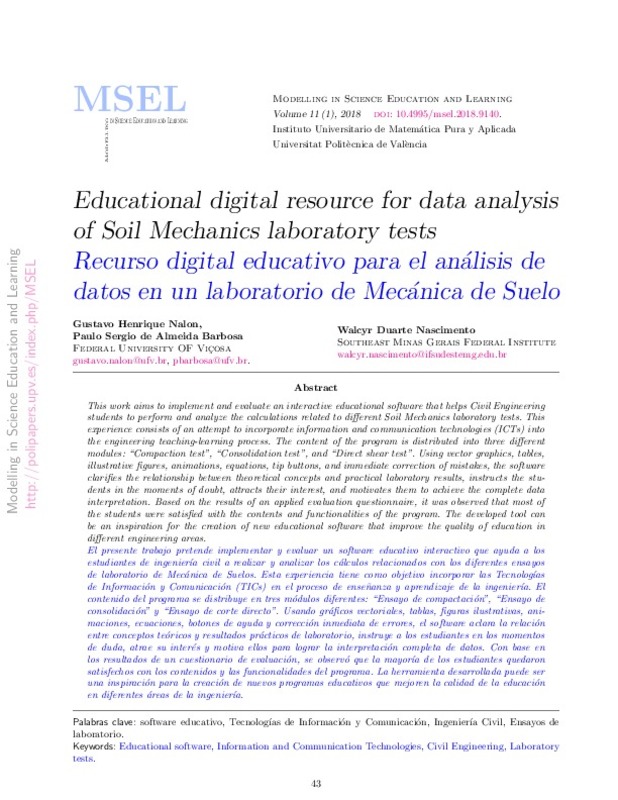JavaScript is disabled for your browser. Some features of this site may not work without it.
Buscar en RiuNet
Listar
Mi cuenta
Estadísticas
Ayuda RiuNet
Admin. UPV
Educational digital resource for data analysisof Soil Mechanics laboratory tests
Mostrar el registro completo del ítem
Nalon, GH.; Barbosa, PSDA.; Nascimento, WD. (2018). Educational digital resource for data analysisof Soil Mechanics laboratory tests. Modelling in Science Education and Learning. 11(1):43-54. https://doi.org/10.4995/msel.2018.9140
Por favor, use este identificador para citar o enlazar este ítem: http://hdl.handle.net/10251/99806
Ficheros en el ítem
Metadatos del ítem
| Título: | Educational digital resource for data analysisof Soil Mechanics laboratory tests | |
| Otro titulo: |
|
|
| Autor: | Nalon, Gustavo Henrique Barbosa, Paulo Sergio de Almeida Nascimento, Walcyr Duarte | |
| Fecha difusión: |
|
|
| Resumen: |
[EN] This work aims to implement and evaluate an interactive educational software that helps Civil Engineering students to perform and analyze the calculations related to different Soil Mechanics laboratory tests. This ...[+]
[ES] El presente trabajo pretende implementar y evaluar un software educativo interactivo que ayuda a los estudiantes de ingeniería civil a realizar y analizar los cálculos relacionados con los diferentes ensayos de ...[+]
|
|
| Palabras clave: |
|
|
| Derechos de uso: | Reconocimiento - No comercial (by-nc) | |
| Fuente: |
|
|
| DOI: |
|
|
| Editorial: |
|
|
| Versión del editor: | https://doi.org/10.4995/msel.2018.9140 | |
| Agradecimientos: |
|
|
| Tipo: |
|








